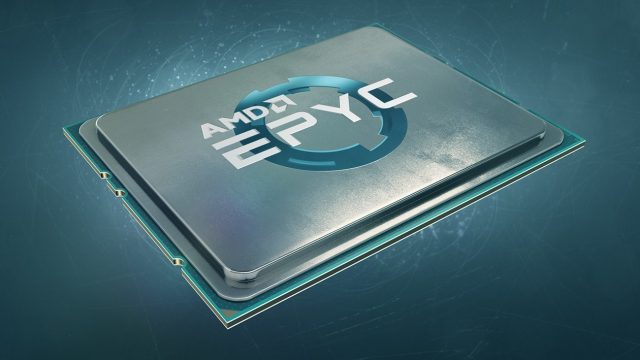Looking at the server processor market share, Intel appears to go down in favor of AMD’s EPYC series that continues to get bigger and dominant, attracting more companies in the server sector. Looking at (unnamed) market sources from Digitimes, it seems that AMD will continue to gain power through 2020 and even later:
“Japan-based NTT Data has announced recently to procure datacenter servers equipped with AMD EPYC processors for its credit and financial information system (CAFIS) from Tyan Computer.”
The demands of the EPYC series have been growing not just because the ratio between performance and price is great, but also because AMD is preparing to release in 2019 the 7-nanometer datacenter processors named Rome. In a recent preview of an unreleased EPYC processor – 64-core/128-thread, it beat in the C-Ray benchmark a pair of Intel Xeon Platinum 8180M CPUs. While the performance was expected to be great, the fact that it is all crammed into one socket is quite impressive.
AMD’s EPYC Series Keeps Boosting Sales
Looking at the share in the processor market, AMD has seen a rise to 3.2% in the fourth quarter of 2918, a huge rise compared to only 0.8% in 2017’s fourth quarter. The earnings were due to EPYC and Ryzen, and the most recent earnings report showed that the two contributed to $1.42 billion in sales.
By the end of next year, Intel’s market share (the server processor space) might even drop under 10% by the end of 2020.
At the moment, EPYC is dominating the market with the price to performance ratio, and in the consumer market, we see the same great deal with Ryzen (and Threadripper), making AMD a stable and powerful competitor in the processor market.
However, many organizations use Intel hardware, and according to a professional network for the IT industry – Spiceworks, Intel hardware is being used by 93% of organizations, compared to 16% that use AMD. Spiceworks also found out that almost 5% of the businesses will add AMD server hardware in the incoming to years, and the percentage will continue to grow.
